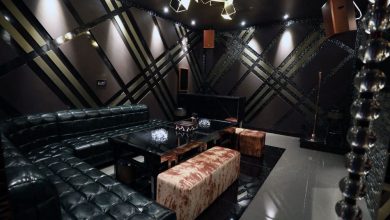Control Panel Building: Designing the Nerve Center of Industrial Automation

In the realm of industrial automation, control panels serve as the central nervous system, orchestrating the intricate dance of machinery, sensors, and processes. A well-designed control panel is more than just a collection of switches and wires; it’s a meticulously crafted interface that translates human intent into machine action. In this article, we delve into the art and science of control panel building, exploring the principles, processes, and innovations that underpin this critical aspect of modern manufacturing.
Understanding Control Panels
At its core, a control panel is a physical enclosure housing electrical components that regulate and monitor industrial processes. From simple motor starters to complex programmable logic controllers (PLCs) and human-machine interfaces (HMIs), control panels come in various shapes and sizes, tailored to the specific needs of each application.
Design Principles
Designing a control panel is akin to composing a symphony; each component plays a unique role, yet must harmonize seamlessly with the ensemble. Key design principles include:
Functionality: The control panel must facilitate the desired functionality, whether it’s regulating temperature, controlling motion, or managing fluid flow.
Safety: Safety is paramount in industrial environments. Control panels must adhere to rigorous safety standards to protect both personnel and equipment from harm.
Accessibility: Components should be arranged for easy access and maintenance, minimizing downtime and maximizing efficiency.
Scalability: As processes evolve, control panels should be scalable to accommodate future expansions or modifications.
Reliability: Industrial operations demand unwavering reliability. Control panels must withstand harsh environments and operate flawlessly under demanding conditions.
Components of a Control Panel
A typical control panel comprises several essential components, each serving a specific function:
Power Supply: Provides electrical power to the system, ensuring uninterrupted operation.
Circuit Protection Devices: Safeguards against overloads, short circuits, and other electrical faults.
Control Devices: Switches, pushbuttons, and selectors that allow operators to initiate or stop processes manually.
Programmable Logic Controller (PLC): Acts as the brain of the system, executing logic-based control algorithms to automate processes.
Sensors: Detect changes in temperature, pressure, level, or other parameters, providing feedback to the control system.
Human-Machine Interface (HMI): A graphical interface that enables operators to interact with the control system, monitoring performance and making adjustments as needed.
Communication Modules: Facilitate data exchange between the control panel and external devices or networks, enabling remote monitoring and control.
Control Panel Building Process
Building a control panel is a multi-step process that demands precision, expertise, and attention to detail:
Requirements Analysis: The first step is to gather requirements from stakeholders, including process engineers, operators, and maintenance personnel. Understanding the operational needs and constraints is crucial for designing an effective control system.
Schematic Design: Based on the requirements analysis, engineers create a schematic diagram outlining the layout and interconnections of electrical components within the control panel.
Component Selection: Choosing the right components is critical for the performance and reliability of the control panel. Factors such as compatibility, reliability, and availability must be carefully considered.
Enclosure Design: The enclosure serves as the housing for the control panel components, protecting them from environmental hazards such as dust, moisture, and electromagnetic interference. Enclosure design should prioritize accessibility, ventilation, and aesthetic considerations.
Wiring and Assembly: Skilled technicians wire the components according to the schematic diagram, following industry best practices and safety standards. Attention to detail is paramount to avoid wiring errors or electrical faults.
Testing and Validation: Once assembled, the control panel undergoes rigorous testing to ensure proper functionality and adherence to specifications. Functional testing, electrical testing, and safety testing are among the key validation steps.
Installation and Commissioning: The final step involves installing the control panel in its intended environment and commissioning it for operation. This may include calibration, parameter tuning, and integration with existing systems.
Innovations in Control Panel Design
The field of control panel design is continuously evolving, driven by technological advancements and industry trends. Some notable innovations include:
Modular Design: Modular control panels offer flexibility and scalability, allowing for easier expansion or modification of control systems.
Integrated Automation: Integration of control, monitoring, and data analytics functionalities into a single platform streamlines operations and enhances efficiency.
Remote Monitoring and Diagnostics: IoT-enabled control panels enable remote monitoring and diagnostics, empowering operators to identify and address issues proactively.
Touchscreen HMIs: Touchscreen interfaces provide intuitive control and visualization capabilities, improving operator efficiency and user experience.
Safety Features: Advancements in safety technologies, such as safety-rated PLCs and integrated safety systems, enhance worker safety and regulatory compliance.
Challenges and Considerations
Despite the benefits they offer, control panels also pose certain challenges and considerations:
Complexity: As control systems become more sophisticated, managing complexity becomes increasingly challenging, requiring specialized expertise and tools.
Cybersecurity: With the proliferation of connected devices, cybersecurity threats pose a growing risk to control systems, necessitating robust security measures.
Legacy Systems: Retrofitting control panels in existing facilities can be complex and costly, especially when dealing with legacy equipment and infrastructure.
Regulatory Compliance: Control panels must comply with various regulatory standards and industry codes, adding complexity to the design and validation process.
Interoperability: Ensuring interoperability between different control systems and devices is essential for seamless integration and operation.
Conclusion
Control panel building is both an art and a science, requiring a delicate balance of technical expertise, creativity, and attention to detail. As industrial automation continues to advance, control panels will play an increasingly pivotal role in driving efficiency, safety, and innovation across diverse industries. By embracing emerging technologies and best practices, control panel designers and engineers can unlock new possibilities and pave the way for a smarter, more connected future.









